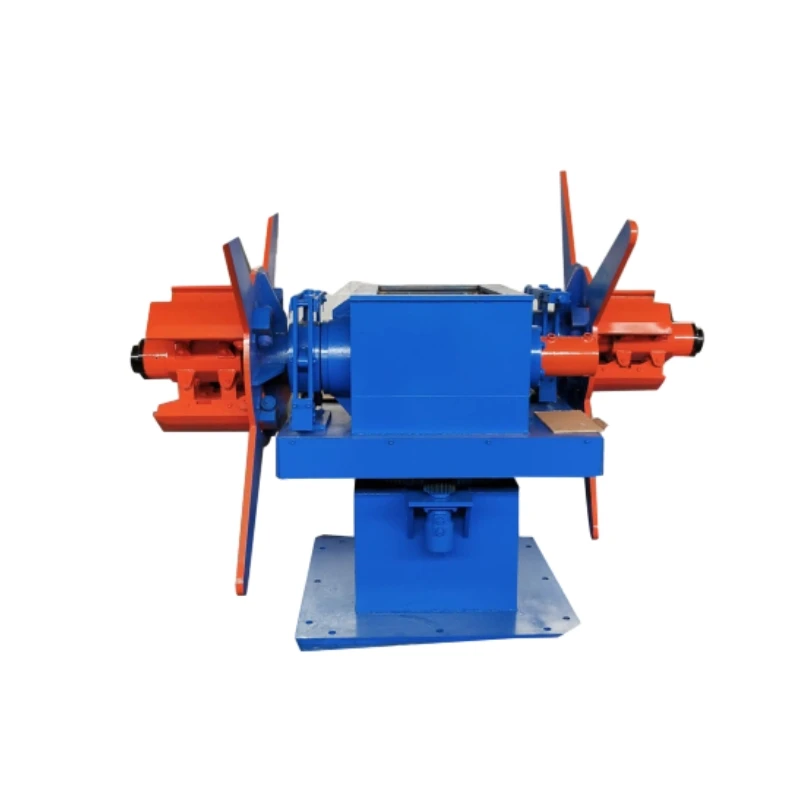channel making machine
The Evolution and Impact of Channel Making Machines
In today’s manufacturing landscape, efficiency and precision are key components that determine the success of production lines. Among the various machines that have transformed industrial production, channel making machines stand out for their ability to create high-quality steel channels used in a plethora of applications, from construction to infrastructure. Understanding the evolution and significance of channel making machines provides insight into their essential role in modern manufacturing.
The channel making machine has its origins in the need for standardized metal components that could be used in a variety of structural applications. Early metal production methods were labor-intensive and often resulted in inconsistencies in product quality. As industries began to expand in the 20th century, the demand for more efficient production methods grew. This led to the development of machines specifically designed to create channels quickly and efficiently.
At the core of the channel making process is the machine's capability to cut, bend, and shape metal strips into the desired channel profile. These machines utilize advanced technology, including Computer Numerical Control (CNC), which allows for precision in measuring and executing cuts. The adoption of CNC technology has marked a significant advancement over traditional manual methods, minimizing error rates and enhancing the uniformity of the products produced.
The process typically begins with raw metal coils being fed into the machine, where they are processed through a series of rollers. These rollers perform the essential tasks of flattening, bending, and cutting the metal into various channel dimensions. The ability to customize dimensions on demand has revolutionized how industries approach projects, allowing for a high degree of flexibility in engineering designs. Built-in safety features and automation facilitate a more secure working environment and reduce the need for manual intervention in potentially hazardous tasks.
channel making machine

Channel making machines are not just about efficiency; they also have a significant environmental impact. With concerns about sustainability rising, the metal manufacturing industry has been challenged to adopt greener practices. Modern channel making machines often incorporate features that reduce waste and energy consumption. By optimizing the cutting and shaping processes, manufacturers can minimize scrap metal and enhance resource efficiency. Many machines nowadays are designed with energy-efficient technologies, contributing to lower operational costs and reduced carbon footprints.
The versatility of channel making machines allows them to serve various industries, including construction, automotive, and aerospace. In the construction industry, for instance, these machines are vital for producing steel channels that form the backbone of structural frameworks. Their ability to produce channels that meet specific load-bearing requirements ensures the integrity and safety of buildings and other structures.
Moreover, the rise of digitalization in manufacturing has further propelled the importance of channel making machines. Industry 4.0 principles—characterized by automation, data exchange, and smart manufacturing—have led to the development of intelligent machines that can communicate with one another. This connectivity allows companies to monitor production in real-time, leading to improved decision-making and operational efficiency. Predictive maintenance, facilitated by data analytics, also minimizes downtime, ensuring that machines operate at optimal capacity.
As we look towards the future, the channel making machine will continue to evolve, embracing innovations in material science and technology. The introduction of lighter and stronger materials presents exciting opportunities for channel manufacturing, potentially enhancing the performance of products while meeting stringent weight and strength requirements.
In conclusion, channel making machines have become integral to modern manufacturing, embodying the principles of efficiency, precision, and sustainability. Their evolution reflects broader industrial trends and challenges while paving the way for innovations that will shape future manufacturing practices. As industries continue to adapt to changing demands, the role of these machines will undoubtedly expand, underscoring their importance in a rapidly evolving marketplace.
-
High Frequency Straight Seam Welded Pipe Production Line-BzZhou Xinghua Machinery Equipment Manufacturing Co., LTD.|Precision Welding, High EfficiencyNewsJul.30,2025
-
High Frequency Straight Seam Welded Pipe Production Line|BzZhou Xinghua|Precision Welding&EfficiencyNewsJul.30,2025
-
High Frequency Straight Seam Welded Pipe Production Line - BzZhou Xinghua|Precision Engineering&EfficiencyNewsJul.30,2025
-
High-Frequency Straight Seam Welded Pipe Production Line-BzZhou Xinghua Machinery Equipment Manufacturing Co., LTD.NewsJul.30,2025
-
High-Frequency Straight Seam Welded Pipe Production Line-BzZhou Xinghua Machinery Equipment Manufacturing Co., LTD.|Precision Manufacturing, High EfficiencyNewsJul.30,2025
-
High Frequency Straight Seam Welded Pipe Production Line-BzZhou Xinghua Machinery Equipment Manufacturing Co., LTD.|Precision Steel Pipe Manufacturing&Industrial EfficiencyNewsJul.29,2025


